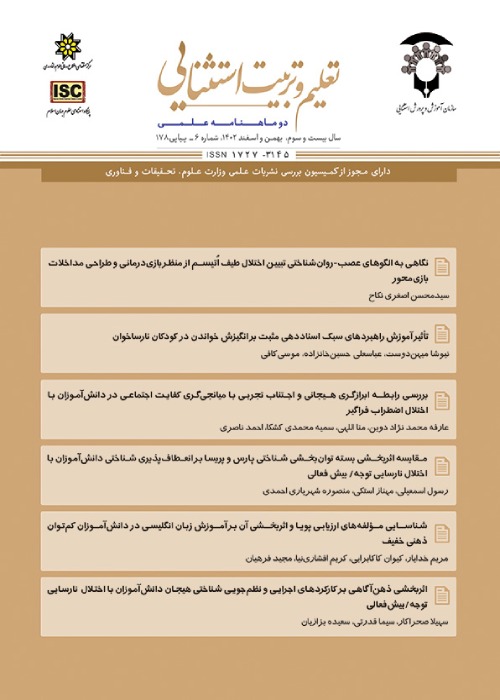Specific Learning Disorder in Diagnostic and Statistical Manual of Mental Disorders-5th revision and Presentation of Three-Layer Response to Intervention Model for Diagnosis
Author(s):
Abstract:
Background
More than fifty years have passed since Samuel Kirk used the term learning disability to describe children who average or above average intelligence. In the fact, these children are both puzzling and paradoxical. Generally, they have many problems in school. Term of learning disability in Diagnostic and Statistical Manual of mental disorders, 5th edition (2013) changed and named specific learning disorder (SLD). In recently definition of SLD that had done by American Association of Psychiatric (APA), there had changes in diagnostic criteria. Diagnostic criteria of intelligence quotient and achievement discrepancy named wait to fall model for delay to identification and limited. On the other hand, response to intervention (RTI) replaced it. RTI is a reality in todays classrooms, bringing with it a wide range of questions.Conclusion
RTI is a multi-step school improvement approach to provide early academic and behavioral supports. This is expected that for screening, identification and diagnostic pay specific attention to RTI in early intervention. Language:
Persian
Published:
Journal of Exceptional Education, Volume:16 Issue: 140, 2016
Page:
37
magiran.com/p1612890
دانلود و مطالعه متن این مقاله با یکی از روشهای زیر امکان پذیر است:
اشتراک شخصی
با عضویت و پرداخت آنلاین حق اشتراک یکساله به مبلغ 1,390,000ريال میتوانید 70 عنوان مطلب دانلود کنید!
اشتراک سازمانی
به کتابخانه دانشگاه یا محل کار خود پیشنهاد کنید تا اشتراک سازمانی این پایگاه را برای دسترسی نامحدود همه کاربران به متن مطالب تهیه نمایند!
توجه!
- حق عضویت دریافتی صرف حمایت از نشریات عضو و نگهداری، تکمیل و توسعه مگیران میشود.
- پرداخت حق اشتراک و دانلود مقالات اجازه بازنشر آن در سایر رسانههای چاپی و دیجیتال را به کاربر نمیدهد.
In order to view content subscription is required
Personal subscription
Subscribe magiran.com for 70 € euros via PayPal and download 70 articles during a year.
Organization subscription
Please contact us to subscribe your university or library for unlimited access!



